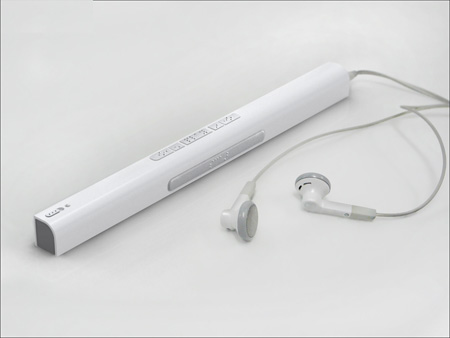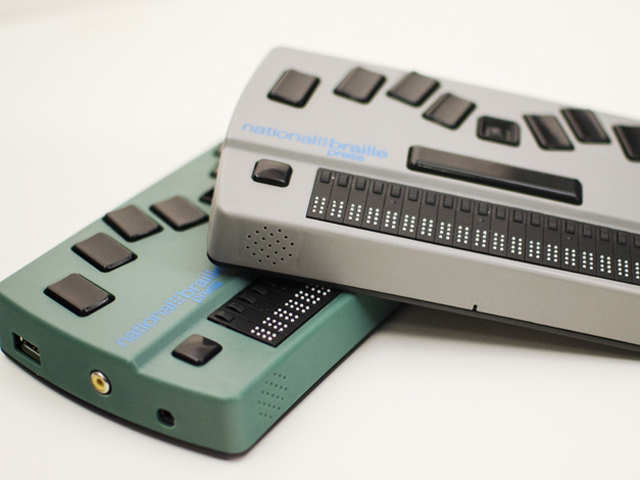Mobility Aids for Visually Impaired Users: Improving Independence
Mobility Aids for Visually Impaired Users: Improving Independence
Blog Article
Discover Cutting-edge Devices Developed for the Aesthetically Impaired
The growth of ingenious tools for the aesthetically impaired stands for a substantial advancement in availability and independence. Technologies such as clever glasses with AI abilities and mobile applications made to provide auditory descriptions are reshaping daily experiences for users.
Smart Glasses for Navigating

Smart glasses developed for navigating are revolutionizing the method visually impaired people connect with their setting. These sophisticated gadgets make use of a mix of video camera modern technology, synthetic knowledge, and acoustic comments to provide real-time info regarding surroundings. By using barrier detection systems, clever glasses can inform users to prospective threats, making it possible for more secure mobility in both familiar and unfamiliar setups.
The combination of GPS innovation even more enhances navigating capabilities, allowing customers to receive auditory directions as they relocate. This hands-free strategy not just promotes freedom but additionally empowers aesthetically impaired people to browse metropolitan landscapes with enhanced confidence. Additionally, several clever glasses are furnished with features that recognize spots and road indicators, giving contextual info that enhances the customer experience.
In addition, the development of these gadgets is continuously advancing, with business working to improve the precision of things recognition and increase the series of navigational features. As clever glasses come to be much more accessible and cost effective, they hold the potential to substantially transform everyday life for visually damaged users. Eventually, these innovative devices represent an important action toward inclusivity, offering boosted flexibility and a higher feeling of autonomy for people navigating the globe around them.

Mobile Apps for Daily Living
Exactly how can mobile applications boost the day-to-day lives of visually damaged people? Mobile applications are revolutionizing the way aesthetically damaged customers browse their settings, manage daily tasks, and accessibility info. These applications give essential support through numerous functionalities, promoting independence and improving top quality of life.
Numerous innovative mobile apps are developed specifically for day-to-day living. For circumstances, apps like Be My Eyes attach aesthetically impaired individuals with sighted volunteers by means of video calls, permitting them to get real-time assistance with jobs such as checking out labels or navigating unknown spaces. Seeing AI, created by Microsoft, makes use of man-made intelligence to explain surroundings, read message, and identify things, successfully transforming a mobile phone into a powerful tool for day-to-day help.
In addition, navigation applications customized for the visually impaired, such as Aira and BlindSquare, supply audio-based directions and environmental info, enabling individuals to traverse their surroundings securely and confidently. Past navigation and instant help, mobile applications additionally support company and task administration, with attributes that help individuals establish pointers, produce to-do checklists, and track appointments. In summary, mobile applications function as indispensable resources, equipping aesthetically impaired people to lead even more independent and satisfying lives.
Wearable Technologies for Assistance
Empowerment via modern technology is progressively evident in the realm of wearable tools designed to assist visually impaired people. These ingenious tools integrate effortlessly right into every day life, boosting navigating and offering essential feedback to users. As an example, smart glasses geared up with electronic cameras can acknowledge faces and read text out loud, permitting customers to interact more with confidence in professional and social settings.
An additional noteworthy development is the usage of haptic comments systems in wearable gadgets. These systems use vibrations or other tactile signals to share details concerning the customer's atmosphere, such as obstacles or adjustments in surface, enhancing movement and security. Wearable technologies likewise consist of wristbands that connect to smartphones, signaling customers to alerts via subtle vibrations, hence improving connectivity without reliance on aesthetic signs.
As these innovations continue to progress, they are not only improving freedom for visually impaired people however likewise promoting a better sense of inclusion in society. By connecting the space in between difficulties encountered in day-to-day living and the capacity for freedom, wearable innovations act as essential devices in the quest for equality and empowerment for those with aesthetic impairments.
Audio Summary Devices
Audio summary devices play an important duty in improving accessibility for visually damaged people, supplying them with the capacity to engage with aesthetic media. Mobility aids for visually impaired users. her comment is here These devices provide narrated summaries of vital aesthetic elements in films, tv shows, and live efficiencies, ensuring that individuals can completely comprehend the context and emotions shared through visuals
Audio summary can be integrated into numerous platforms, consisting of streaming solutions, cinema screenings, and live cinema. Many popular streaming services now consist of audio summary as an ease of access feature, enabling customers to pick it quickly. Along with traditional media, specialized apps likewise exist, giving audio summaries for art exhibitions, museums, and other social events.
The effectiveness of audio description depends upon the ability of the narrators, that have to convey visual details succinctly without detracting from the initial audio. Innovations in this field are also paving the means for even more tailored experiences, where individuals can specialty eye institute readjust the level of information and pacing according to their choices.
Braille Innovations and Instruments
Braille technologies and tools have substantially changed the means visually impaired people communicate with message and details. Modern developments have actually resulted in the development of versatile tools that boost literacy and self-reliance amongst individuals. Especially, Braille display innovations have actually progressed, allowing for dynamic analysis experiences. These devices convert electronic text into Braille, making it possible for individuals to access a substantial array of info on smart devices, computer systems, and tablet computers.
Moreover, portable Braille notetakers integrate typical Braille input with modern-day performances, promoting note-taking, organizing, and paper modifying on the move. AI-powered visual aids. These small devices typically feature text-to-speech capabilities, connecting the gap in between Braille and acoustic details
In enhancement, innovative Braille printers have actually emerged, allowing customers to index create Braille labels, records, and instructional products effectively. This accessibility fosters better engagement in expert and instructional settings, ultimately promoting inclusivity.
In addition, research right into wise Braille technologies proceeds to expand. Devices that incorporate expert system are being explored to give real-time navigation support and contextual details, improving the customer experience in varied settings. Overall, these innovations show a dedication to empowering visually impaired people with innovation, ensuring they can conveniently access and involve with the globe around them.

Final Thought
The innovation of ingenious tools for the aesthetically impaired considerably enhances self-reliance and quality of life. These modern technologies not just foster higher inclusion yet also promote autonomy in day-to-day tasks, ultimately adding to a much more available and fair society for aesthetically impaired people.
As smart glasses become a lot more economical and accessible, they hold the prospective to dramatically transform day-to-day life for visually damaged customers. Mobile applications are reinventing the means visually impaired customers browse their environments, handle everyday jobs, and gain access to details. Apps like Be My Eyes attach visually impaired individuals with sighted volunteers using video clip telephone calls, allowing them to get real-time help with jobs such as reading labels or navigating unknown rooms.Furthermore, navigation apps tailored for the visually damaged, such as Aira and BlindSquare, offer audio-based instructions and ecological info, making it possible for users to traverse their surroundings safely and with confidence.The innovation of cutting-edge tools for the visually impaired significantly improves self-reliance and high quality of life.
Report this page